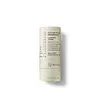What's inside
What's inside
 Key Ingredients
Key Ingredients

 Benefits
Benefits

 Concerns
Concerns

 Ingredients Side-by-side
Ingredients Side-by-side

Maranta Arundinacea Root Powder
Skin ConditioningCaprylic/Capric Triglyceride
MaskingButyrospermum Parkii Butter
Skin ConditioningCetearyl Alcohol
EmollientSodium Bicarbonate
AbrasiveTapioca Starch
Cocos Nucifera Oil
MaskingCalcium Starch Octenylsuccinate
AbsorbentStearyl Stearate
EmollientParfum
MaskingEuphorbia Cerifera Wax
C15-19 Alkane
SolventZinc Ricinoleate
Glyceryl Undecylenate
EmollientHelianthus Annuus Seed Wax
Skin ConditioningPolyhydroxystearic Acid
EmulsifyingSorbitol/Sebacic Acid Copolymer Behenate
Skin ConditioningGlyceryl Caprylate
EmollientPolyglyceryl-2 Caprate
EmulsifyingWater
Skin ConditioningRosmarinus Officinalis Flower Extract
AntioxidantTocopherol
AntioxidantGlycine Soja Oil
EmollientLavandula Hybrida Oil
EmollientOrbignya Oleifera Seed Oil
EmollientPelargonium Graveolens Oil
MaskingRosmarinus Officinalis Leaf Oil
MaskingMaranta Arundinacea Root Powder, Caprylic/Capric Triglyceride, Butyrospermum Parkii Butter, Cetearyl Alcohol, Sodium Bicarbonate, Tapioca Starch, Cocos Nucifera Oil, Calcium Starch Octenylsuccinate, Stearyl Stearate, Parfum, Euphorbia Cerifera Wax, C15-19 Alkane, Zinc Ricinoleate, Glyceryl Undecylenate, Helianthus Annuus Seed Wax, Polyhydroxystearic Acid, Sorbitol/Sebacic Acid Copolymer Behenate, Glyceryl Caprylate, Polyglyceryl-2 Caprate, Water, Rosmarinus Officinalis Flower Extract, Tocopherol, Glycine Soja Oil, Lavandula Hybrida Oil, Orbignya Oleifera Seed Oil, Pelargonium Graveolens Oil, Rosmarinus Officinalis Leaf Oil
Ingredients Explained
These ingredients are found in both products.
Ingredients higher up in an ingredient list are typically present in a larger amount.
This ingredient is also known as shea butter. It is an effective skin hydrator and emollient.
Emollients help soothe and soften your skin. It does this by creating a protective film on your skin. This barrier helps trap moisture and keeps your skin hydrated. Emollients may be effective at treating dry or itchy skin.
Shea butter is rich in antioxidants. Antioxidants help fight free-radicals, or molecules that may harm the body. It is also full of fatty acids including stearic acid and linoleic acid. These acids help replenish the skin and keep skin moisturized.
While Shea Butter has an SPF rating of about 3-4, it is not a sunscreen replacement.
Shea butter may not be fungal acne safe. We recommend speaking with a professional if you have any concerns.
Learn more about Butyrospermum Parkii ButterCocos Nucifera Oil is obtained from the kernels of the coconut fruit. In other words, this is coconut oil.
Coconut Oil is rich in fatty acids with lauric acid making up the majority of these. It also contains linoleic acid. Due to this high fatty acid content, coconut oil helps trap moisture and soften skin.
Despite being antibacterial, coconut oil may not be great for acne-prone skin. It is comedogenic and may clog pores. This ingredient may not be safe for malassezia or fungal acne.
Note: Coconut Oil should not replace your sunscreen for UV protection. Studies show it only blocks about 20% of UV.
This oil is non-volatile and has a light scent.
The term 'fragrance' is not regulated in many countries. In many cases, it is up to the brand to define this term. For instance, many brands choose to label themselves as "fragrance-free" because they are not using synthetic fragrances. However, their products may still contain ingredients such as essential oils that are considered a fragrance.
Learn more about Cocos Nucifera OilWe don't have a description for Maranta Arundinacea Root Powder yet.
Sodium Bicarbonate has a more famous name: Baking soda.
In cosmetics, it is used to adjust the acidity. Due to its white crystalline solid form, it can also be an abrasive (exfoliator).
This ingredient is water-soluble.
Learn more about Sodium BicarbonateTocopherol (also known as Vitamin E) is a common antioxidant used to help protect the skin from free-radicals and strengthen the skin barrier. It's also fat soluble - this means our skin is great at absorbing it.
Vitamin E also helps keep your natural skin lipids healthy. Your lipid skin barrier naturally consists of lipids, ceramides, and fatty acids. Vitamin E offers extra protection for your skin’s lipid barrier, keeping your skin healthy and nourished.
Another benefit is a bit of UV protection. Vitamin E helps reduce the damage caused by UVB rays. (It should not replace your sunscreen). Combining it with Vitamin C can decrease sunburned cells and hyperpigmentation after UV exposure.
You might have noticed Vitamin E + C often paired together. This is because it is great at stabilizing Vitamin C. Using the two together helps increase the effectiveness of both ingredients.
There are often claims that Vitamin E can reduce/prevent scarring, but these claims haven't been confirmed by scientific research.
Learn more about Tocopherol